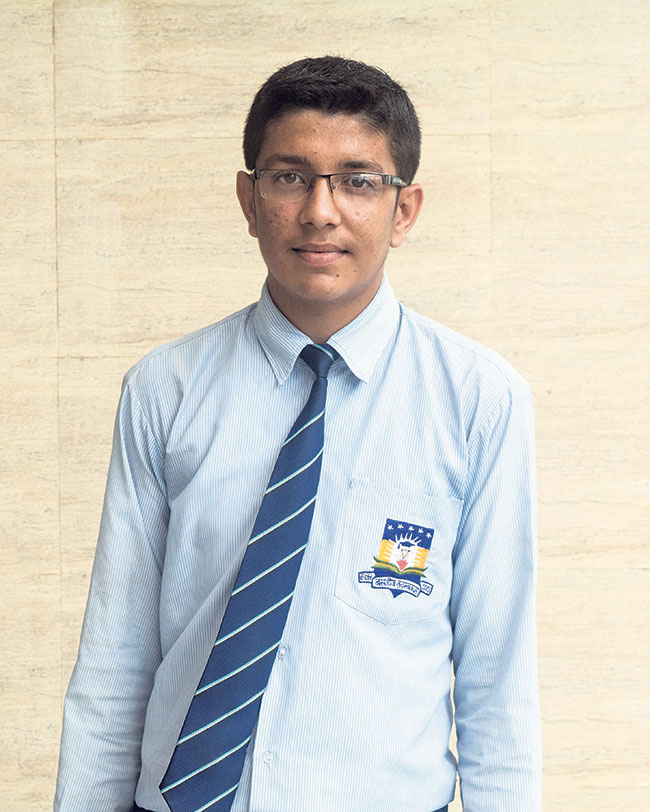Social media is becoming a dangerous place for adults and children alike as we can see new users like our parents giving in to hoaxes - from fake appeals for donations to illogical pun-intended lifestyle hacks. Teenagers increasingly consume incomplete information regarding mental health and feel the necessity to associate themselves with extreme cases like depression, narcissism and border-line personality disorder. Not only that, social media has become a platform for body-shaming, often perpetuated through fake news about boob jobs and celebrity body measurements. To understand youngsters’ take and reaction toward fake news, Shuvechchha Ghimire of My City interviewed ten students of DAV College. She observed that the understanding of fake news to these youngsters was limited. However, she came across a few unique narratives that were typical of social media users of all age groups. Following are edited excerpts from her conversation with the students.
Tuzu Parajuli
6th semester BBA student

As a school student, I remember coming across news that Rajpal Yadav had died. After a quick search on google, I came to know that the actor was alive. Other fake news that I came across was of the devastation during the 2015 Gorkha Earthquake. News outlets portrayed only the damaged few places and drew a concurrence of devastation of the entire country. While it certainly earned a handsome donation, it affected my father’s travel agency since international tourists feared for their safety in Nepal. Fake news not only wasted my time, but also impacted our family business. If such news could affect me and travel enthusiasts — informed social media users — I can only imagine what impact they can make on uninformed users. People like our parents, who are relatively new to social media, are active consumers of fake news. I believe an effective way to stop the popularity of fake news would be to stop consuming them. On a personal basis, I customize my news feed and only subscribe to authentic sites of national and international newspapers.
Jitendra Thakur
4th semester BBA student

Coming from Madhesh, I have observed a troublesome tendency among political parties to use social media to perpetuate rumors about other parties. For instance, the 2016 blockade by Madhesi parties was considered a work of India. At that time, social media was full of anti-India sentiment, to which political parties responded with nationalistic narratives without really addressing the Madhesi issues. Although I responded to one such post with a paragraph saying the real scenario was different, my message however got overshadowed among hundred other hatred comments. Since then, I believe we should use social media as a platform to support or start activism only when we are fully informed of its particulars.
Ritu Thapa
Grade XII, Science Faculty

The best way to stop the spread of fake news is to neglect them. Otherwise, we see people like Seema Subedi rise to popularity. So many Nepalis took time to answer questions/hatred initiated by Subedi and a lot of hate news were created to defame her. If you think about it, Subedi was not even a person of influence. But people spent a lot of time scrolling through comments, just to be on the same page as other Nepalis. In retrospect, it was an utter waste of my time and everyone else’s’. It did no good to anyone, except the meme pages that received more subscribers.
Nepalis surprised by Indian media’s repeated romance with fake...

Priya Sunwar
4th semester BBA student

I believe fake news is on the rise because Facebook allows all of its users to create pages that they can later use to perpetuate degrading messages. Fake news about health, fitness and beauty are actively perpetuated through fake accounts and are consumed by less-informed users. For example, users fall for any recommended beauty or health tips that oftentimes are hoax and incomplete, and end up degrading their physical as well as skin health. When I come across such posts, I discuss their authenticity with my friends so that my circle wouldn’t fall in such vicious trap.
Sujata Khatiwada
8th semester BBA student

I remember the incident of ‘red number’. My family circle believed that picking a call with ‘red number’ was dangerous. There were few pages that bore witness to it: picking up the call had apparently damaged their phone’s battery life. While I did not buy the news, my parents and relatives believed it and discussed it in our family gatherings for more than a month. Even when a national news broadcasting channel had deemed the news false, my parents still believed the rumor. “Why else would the post receive such popularity online?” they asked me every time I told them the news was false. Since then, I have learnt to completely neglect such contents. That was the best approach to stop the flow of fake news.
Laxan Maharjan
4th Semester BBA student

Even popular online newspapers are found giving misleading information at times. As a sport enthusiast, I read through sports section a lot and end up finding wrong references in the news. I think that happens because of the lack of information about international sports. However, there is no place where I, or any other ardent follower, can report. This ultimately kills the authenticity of any form of news at the end of the day. The blue tick mark that twitter uses works to increase authorization of an account and hence the accountability of any marketing post. This in a way might stop the excessive flow of fake news over the internet.
Nandita Shrestha
Grade XII, Management Faculty

Fake posts like “Like and share” a certain post “if you want to pass in an exam” or “if you want to have a good day” create an environment of fear. I remember my friend sharing such posts on messenger because she was scared. She thought if she broke the chain something terrible might happen to her. This created an environment of distrust among me and my friend as I strongly dislike such posts. Eventually, I stopped using Facebook altogether.
Dipendra Bhatta
Grade XII, Science Faculty

I once tried to report fake news which asked for blood donation for a lady suffering from cancer. However, reporting the post did nothing tangible. This made me realize that the public was yet to be aware, especially in regards to content in social media. If government forms a body that raises awareness about ‘promo garbage’, spread of fake news could be stopped.
Sajak Bahadur Shah
Grade XII, Science Faculty

People are forced to give in and ‘like, comment and share’ posts that display images of deities. Likewise, there are others that display grotesque images and ask us to type ‘Amen’ or donate. These kinds of posts are a nuisance and need to be controlled. A regulating body should be created by the government to manage the flow of these kinds of fake news. National mainstream media can also play a role in actively mitigating the effects of fake news.
Pradeep Ghimire
Grade XII, Science Faculty

I spend an average 10-15 minutes per day in Facebook. My news feed is filled with articles on cosmology and are devoid of usually viral fake news. Also, I take in information only when they are from credible sites, like that of MIT and NASA. As the saying goes, iron cuts iron, creating positive fake news to tackle its spread might help. Fake news like ‘the government has implemented severe punishments against the consumption and promotion of fake news’ might help break the chain. Since there is not much one can do on an individual level, this could work to create awareness.



































